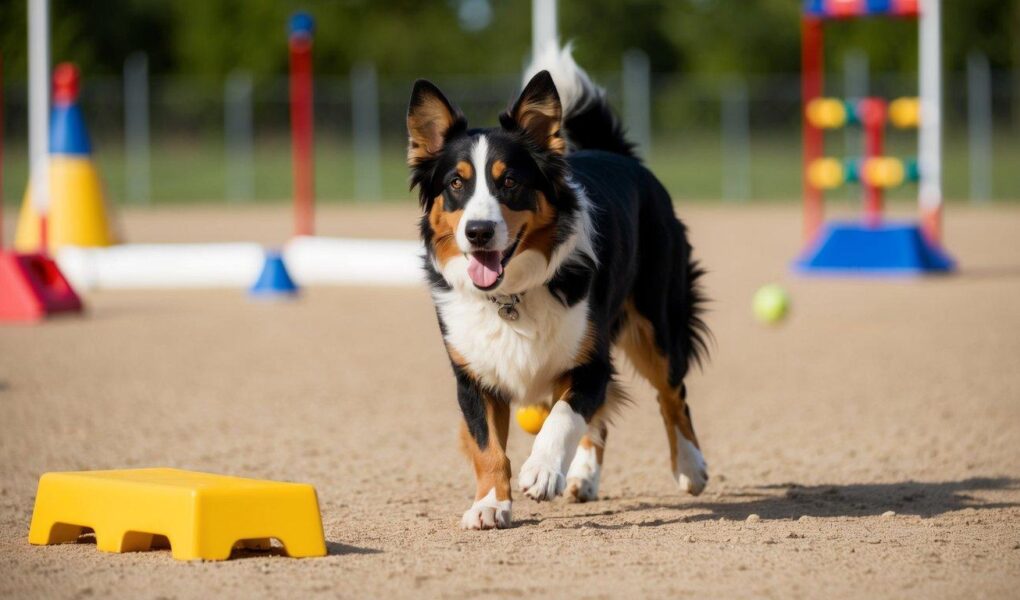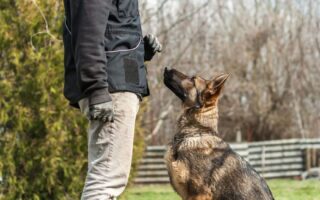Mastering the Art of Australian Shepherd Training: A Journey of Trust and Teamwork
Australian Shepherds, with their striking coat patterns and boundless energy, are more than just charismatic companions; they are intelligent and eager-to-please partners that thrive on mental and physical stimulation. Whether you are a seasoned dog owner or a first-time handler, training this dynamic breed is not just a necessity but a rewarding adventure that strengthens the bond between you and your furry friend. From mastering basic commands to engaging in advanced agility courses, the journey of training an Australian Shepherd unveils the beauty of communication, understanding, and mutual respect. In this article, we will explore effective training techniques, the importance of socialization, and tips to harness the full potential of your Australian Shepherd while ensuring a harmonious and fulfilling relationship. Join us as we embark on this enlightening path, where patience meets playfulness, and every lesson learned brings you closer to your spirited companion.
Table of Contents
- Understanding the Intelligent Nature of Australian Shepherds
- Effective Socialization Strategies for Your Australian Shepherd
- Essential Training Techniques to Harness Their Energy
- Building a Strong Bond Through Positive Reinforcement
- Q&A
- In Conclusion
Understanding the Intelligent Nature of Australian Shepherds
The Australian Shepherd is often celebrated for its remarkable intelligence, which makes them not only exceptional working dogs but also devoted companions. Their ability to understand commands quickly and retain information is unparalleled, stemming from their history as herding dogs. This breed thrives when engaged mentally and physically, making structured training sessions a vital component of their care. Key attributes that contribute to their intelligent nature include:
- Problem-Solving Skills: They can quickly learn to navigate complex situations, making them adept at tasks and challenges.
- High Energy Levels: Their drive for activity means that they require stimulating exercises, both mentally and physically.
- Strong Bonding Capability: They develop deep trust and connection with their trainers and families, which fosters effective learning.
Furthermore, it’s vital for owners to maintain a consistent training regimen that incorporates variety and fun to keep the Australian Shepherd engaged. Their cognitive abilities can lead to boredom if training becomes monotonous, so mixing up sessions with agility courses or interactive games can reap significant benefits. Consider implementing a schedule that includes:
| Activity Type | Frequency | Duration |
|---|---|---|
| Basic Commands | Daily | 15 minutes |
| Agility Training | 3 times a week | 30 minutes |
| Interactive Play | Daily | 20 minutes |
Effective Socialization Strategies for Your Australian Shepherd
Socialization is crucial for Australian Shepherds, as their natural herding instincts can lead them to be overly protective or anxious if not properly managed. One effective way to enhance your dog’s social skills is through positive exposure to varied environments, people, and other animals. Start with controlled encounters in a familiar setting before gradually introducing your pup to busier public spaces. Engage in leash training to ensure your dog feels secure and well-managed during these outings. Remember to keep sessions short and rewarding, offering treats and praise when they remain calm and engaged, turning each interaction into a positive experience.
Another strategy involves structured playdates with other sociable dogs. This not only helps in developing your Australian Shepherd’s confidence but also teaches them essential play manners. When organizing these playdates, consider the following:
| Dog Traits | Ideal Compatibility |
|---|---|
| Friendly | Outgoing Australian Shepherds |
| Calm | Timid or less dominant breeds |
| Playful | Active puppies or young dogs |
By monitoring interactions and intervening when necessary, you can ensure a safe environment for all dogs involved. Gradually increasing the intensity and duration of these interactions will help your Australian Shepherd develop adaptability and resilience. Always end play sessions on a high note, using rewards to reinforce their positive experiences, thereby creating a strong foundation for their social skills.
Essential Training Techniques to Harness Their Energy
Training an Australian Shepherd requires a nuanced approach that capitalizes on their high energy and intelligence. One of the most effective methods is to incorporate positive reinforcement techniques, which not only motivate dogs but also strengthen the bond between you and your furry friend. Use treats, praise, and toys to reward desired behaviors, ensuring that the experience is enjoyable for both. Consistency is key; establish a routine that includes training sessions several times a day, each lasting around 5-10 minutes to keep their attention and enthusiasm intact.
Another valuable technique is to engage in mental stimulation activities alongside physical exercises. This breed thrives on challenges, so consider implementing engaging tasks such as:
- Agility courses
- Fetch games with varied retrieval methods
- Puzzle toys that dispense treats
- Basic obedience skills interspersed with tricks
By diversifying their training regimen, you not only help channel their energy but also encourage a well-rounded and obedient dog. Remember to monitor their progress and be patient; every Australian Shepherd learns at their own pace, and the journey should be as rewarding as the outcome.
Building a Strong Bond Through Positive Reinforcement
Establishing a trusting relationship with your Australian Shepherd begins with understanding the power of positive reinforcement. This training method not only encourages good behavior but also deepens the emotional connection you share with your furry friend. Focusing on rewards rather than punishments creates a more enjoyable learning environment. By utilizing treats, praise, and play, you can effectively motivate your dog to respond. Each time your Australian Shepherd successfully completes a command or displays good behavior, follow it up with a reward that resonates with them. Over time, they will associate these moments with positive experiences, further solidifying your bond.
To implement positive reinforcement effectively, consistency is key. Consider using a structured approach to provide clarity for your pup. Below are some simple strategies that can lead to successful training sessions:
- Timing: Reward immediately after the desired behavior to enhance learning.
- Variety: Mix up the types of rewards to keep your dog engaged—switch between treats, toys, and affection.
- Patience: Be prepared for setbacks; every dog learns at their own pace.
Engagement also plays a crucial role in this training process. Utilizing a variety of techniques will not only keep your pup interested but will also promote a stronger connection between you two. Whether it’s teaching new tricks or reinforcing existing commands, embracing the journey together will lead to countless rewarding moments.
Q&A
Q&A: Training Australian Shepherds
Q1: What makes the Australian Shepherd a unique breed for training?
A1: Australian Shepherds are renowned for their intelligence and energy. Originally bred as herding dogs, they possess an innate eagerness to work and learn. This breed thrives on mental stimulation and physical activity, making them excellent candidates for training in various disciplines, from obedience to agility and even specialized tasks.
Q2: At what age should I start training my Australian Shepherd?
A2: Early training is essential for Australian Shepherds, and it’s recommended to begin socialization and basic obedience training as early as 8 weeks old. Engaging them in positive reinforcement training during their formative months can help establish a solid foundation for good behavior and adaptability in different environments.
Q3: What training techniques work best for Australian Shepherds?
A3: Positive reinforcement techniques are the most effective for training Australian Shepherds. These dogs respond well to rewards, such as treats, praise, and playtime. Consistency is key, so incorporating short, engaging training sessions that mix commands with playful activities will keep their interest piqued and their spirits high.
Q4: How do I handle the high energy levels of an Australian Shepherd during training?
A4: To harness their energy, ensure that training sessions are dynamic and engaging. Incorporate breaks that allow them to burn off some steam with playtime or exercise. Balancing training with physical activity not only helps maintain their focus but also strengthens your bond with them.
Q5: Are there any common challenges when training an Australian Shepherd?
A5: One common challenge is their independent streak; Australian Shepherds can sometimes be stubborn or easily distracted. Consistency and patience are crucial. If you find they aren’t responding to a command, re-evaluate the training environment for distractions and adjust your approach to keep them engaged.
Q6: How important is socialization in the training process?
A6: Socialization is extremely important for Australian Shepherds. Introducing them to various environments, people, and other animals helps them become well-rounded adults. This process can mitigate behavioral issues that stem from anxiety or fear, which are not uncommon in high-energy breeds.
Q7: What are some advanced training options for Australian Shepherds?
A7: Once basic training is established, you can explore advanced options such as agility training, herding trials, or even therapy dog certification. These activities challenge their minds and bodies, allowing them to utilize their natural instincts and energy in positive ways.
Q8: How can I tell if my training is effective?
A8: Signs of effective training include your Australian Shepherd’s responsiveness to commands, eagerness to participate in training sessions, and a noticeable improvement in behavior over time. A well-trained dog will exhibit calmness, focus, and confidence in various settings.
Q9: What organizations or resources can I turn to for additional training guidance?
A9: Numerous resources are available, including local dog training clubs, online courses, and books specifically tailored for Australian Shepherds. Organizations like the American Kennel Club (AKC) and the Association of Professional Dog Trainers (APDT) can also provide valuable information and support.
Q10: Any final advice for aspiring Australian Shepherd trainers?
A10: Embrace the journey! Training an Australian Shepherd can be incredibly rewarding, full of challenges but also moments of joy and connection. Patience, creativity, and a good sense of humor will serve you well as you navigate this exciting adventure together. Happy training!
In Conclusion
As we conclude our exploration into the world of training Australian Shepherds, it is clear that these intelligent and energetic dogs thrive on guidance, purpose, and companionship. By embracing their natural instincts and employing positive reinforcement techniques, you can cultivate a strong bond that enhances both their skills and your shared experiences. Remember, patience and consistency are key, as every pup learns at their own pace. Whether you aim to refine their herding abilities, teach them engaging tricks, or simply foster good behavior, the journey of training your Australian Shepherd is an adventure worth embarking upon. With love, dedication, and the right approach, you’ll not only raise a well-mannered companion but also create cherished memories that will last a lifetime. Now, equipped with knowledge and tips, it’s time for you to step into the exciting world of training—where every command learned is a victory, and every wagging tail is a celebration of your teamwork. Happy training!



